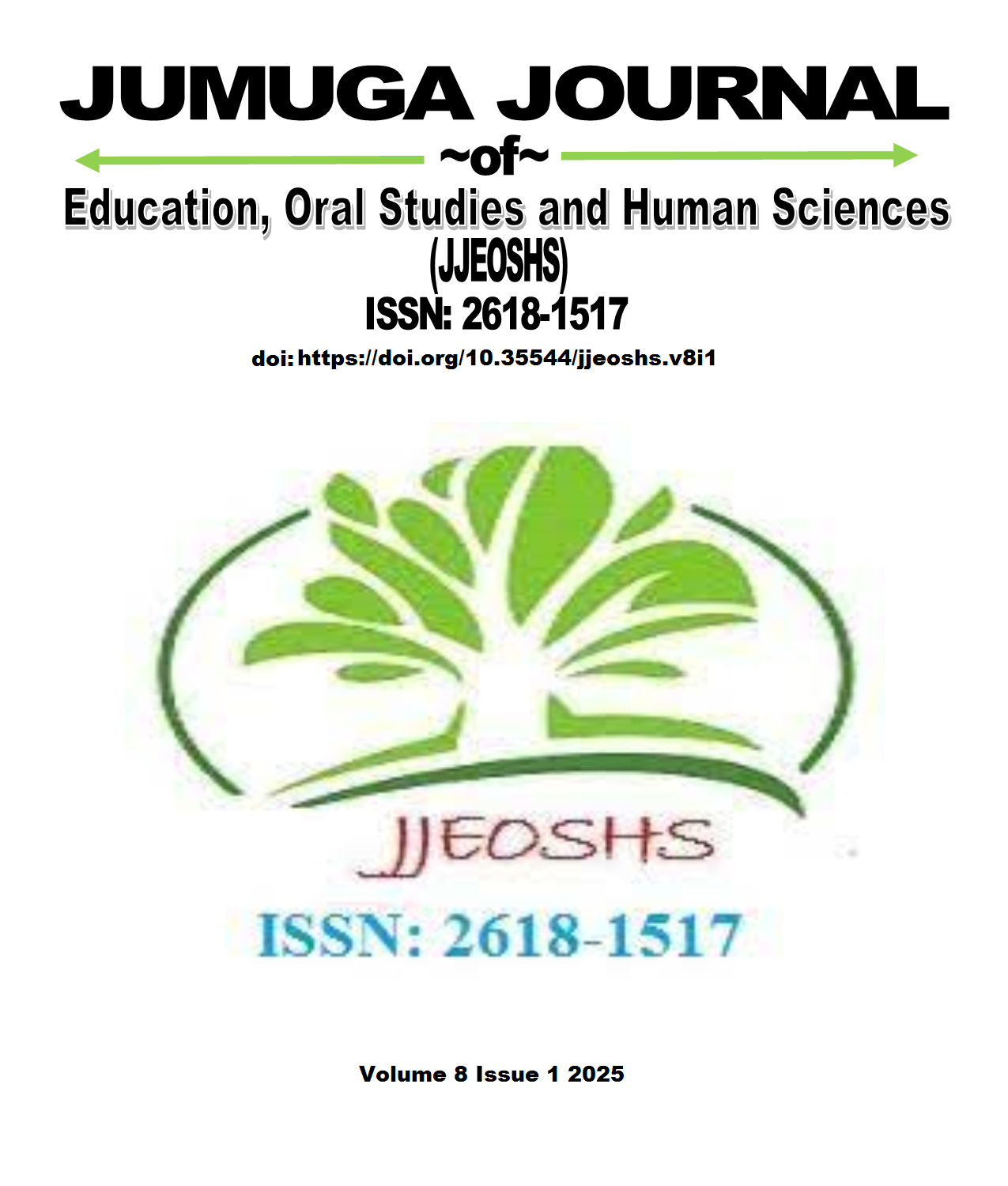Lab Modality and Measurement Accuracy
A review of Electronics Practical Workbench versus other Approaches
DOI:
https://doi.org/10.35544/jjeoshs.v8i117Keywords:
Measurement Accuracy, Electronics Practical WorkbenchAbstract
This article sought to assess the impact of using an Electronics Practical Workbench (EPW) on the accuracy of students’ measurements in KCSE Physics practical exams, which evaluate skills in mechanics, electricity and optics. A quasi-experimental design with non-equivalent groups was employed, using pre-tests, post-tests, observation checklists and teacher interviews. The focus was on measuring students’ precision in recording voltage, current and resistance. Quantitative data were analyzed using the Mann-Whitney U Test and Ordinal Logistic Regression. Findings showed that students using the EPW achieved significantly higher accuracy and better overall performance in practical assessments compared to those using traditional lab setups. The article concludes that digital tools like the EPW enhance measurement precision and practical understanding, suggesting that integrating such technology in school labs can mitigate challenges related to outdated equipment. These improvements have important implications for strengthening physics education and student performance in Kenyan secondary schools.







